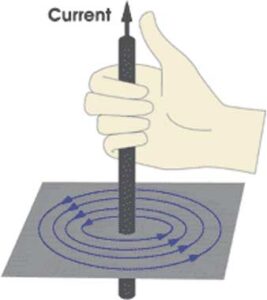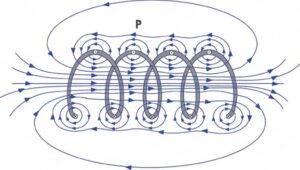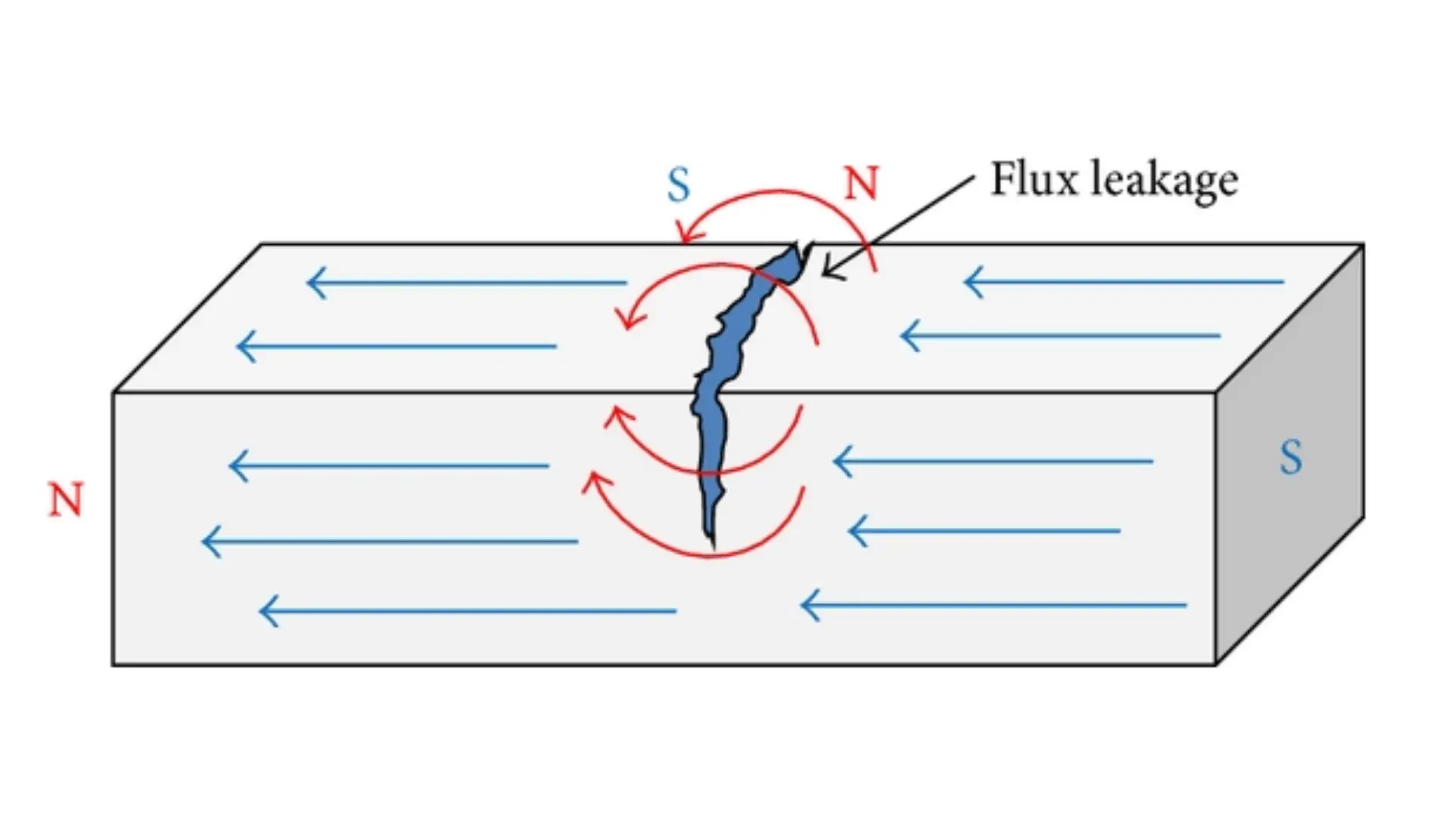Magnetic Field Generation
In the early nineteenth century, Hans Christian Oersted made a pivotal observation: an electric current coursing through a wire could alter the orientation of a nearby compass needle. This observation implied that the wire’s electric current was, in fact, generating a magnetic field. Oersted conducted an investigation into the magnetic field’s characteristics around a lengthy, straight wire. His findings revealed that the magnetic field took on a circular shape encircling the wire, with its strength being directly linked to the current magnitude within the wire.
Furthermore, he discovered that the field’s potency was most pronounced in close proximity to the wire, gradually waning as one moved away from the conductor until it became imperceptible. Typically, within most conductive materials, the magnetic field persists only as long as an electric current flows through them (i.e., as long as electrical charge is in motion). Nevertheless, in ferromagnetic substances, the electric current can prompt certain or all magnetic domains to align, resulting in a lasting residual magnetic field.
Oersted additionally observed that the orientation of the magnetic field relied on the direction of the electric current within the wire. A straightforward mnemonic, known as the right-hand clasp rule, aids in recalling the magnetic field’s orientation around a conductor. When a person holds the conductor in their right hand, aligning the thumb with the current’s direction, their fingers will encircle the conductor following the path of the magnetic field.

Magnetic Field Produced by a Coil
When an electrically charged conductor is shaped into a loop or multiple loops to create a coil, it generates a magnetic field. This magnetic field travels through the center of the loop or coil along its longitudinal axis and completes its circuit by encircling the exterior of the loop or coil. The magnetic fields encompassing each wire loop merge, resulting in a concentrated field along the coil’s central axis. The diagram below depicts a loosely wound coil to illustrate the magnetic field’s interaction. As the coil is wound more tightly, the magnetic field becomes substantially uniform across the coil’s length.
Similar picture required
The potency of a coil’s magnetic field heightens not only as the current intensifies but also with the inclusion of additional loops within the coil. Termed a “solenoid,” an elongated, straight wire coil has the capability to generate an almost uniform magnetic field akin to that produced by a bar magnet. The intense magnetic field confined within a coil proves advantageous in magnetizing ferromagnetic materials for inspection via the magnetic particle testing technique. It’s important to note that the magnetic field outside the coil is feeble and lacks suitability for magnetizing ferromagnetic materials.


